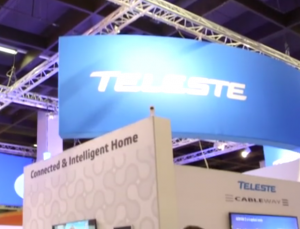
After more than 40 years of operation, DTVE is closing its doors and our website will no longer be updated daily. Thank you for all of your support.
Delay in DAA products rollouts hits Teleste, with an increase in net sales
 Delay in distribute access architecture products (DAA) rollouts hits broadband and video technology outfit Teleste, due to an increasing significant demand shifting to second generation of products, according to the company.
Delay in distribute access architecture products (DAA) rollouts hits broadband and video technology outfit Teleste, due to an increasing significant demand shifting to second generation of products, according to the company.
In the full-year 2022, the company revealed it faced an operating loss of EUR 4.8 million, joined by an impairment of EUR 5.4 million in research and development (R&D) expenses as well as an impairment of EUR 1.4 million in other adjustment items
The company said the impairment was related to first-generation distributed access architecture software and products, as well as software and customer-specific solutions in rolling stock on-board systems.
Teleste predicts the delayed deployment of the first generation DAA products will continue to remain limited with the shifting demand for second-generation products.
It was also reported in the full year 2022 net sales increased by 14.6% in the business amounting to EUR 165 million and orders received totalled to EUR 188.5 million.
CEO of Teleste, Esa Harju said: “The year was characterised by several significant events in our external perating environment: the deterioration of the global geopolitical situation, war in Europe, the changing macroeconomic environment and rising inflation. Global supply chains were still severely disrupted throughout 2022, which affected the delivery times and costs of materials. We made progress in passing the higher costs on to selling prices, but the increase on costs had a negative impact on our profitability. We were able to maintain our delivery capability by accumulating buffer stocks of materials, which led to a significant increase in net working capital. For that reason, we increased our liquidity reserve in September by means of new financing agreements.”
He added, “We expect the instability of the operating environment to continue in 2023, with continued supply chain challenges particularly regarding electronics components and semiconductors. Passing the increased costs on to customer prices requires continuous measures in both of our businesses, and we will also continue to adapt all the company’s costs during the year. In addition to maintaining delivery capability, we will continue determined measures to improve profitability and to optimise working capital. The company will also continue to execute its programme aimed at sharpening the strategy.”


